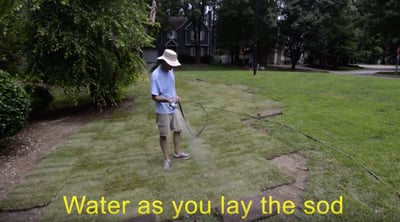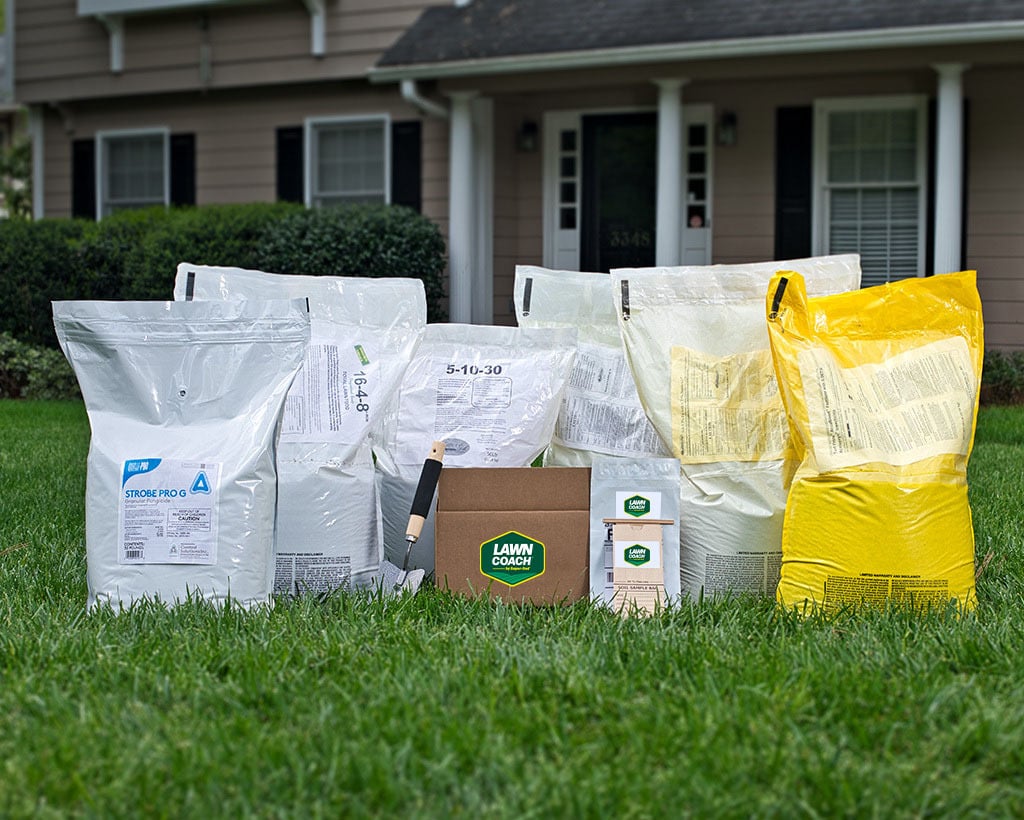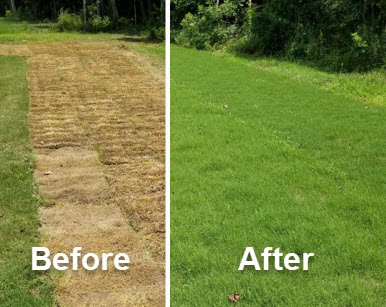

How to Water New Sod During Root Establishment


We get asked a lot about watering brand new sod - when? how much?
First thing to keep in mind is that you need to water new sod as you lay it, especially when it's warm out. Before installation day, read our blog post on Watering Sod During Installation.
After you've laid all your new sod (and watered behind you as you laid it), here's how to assess the water requirements of new sod until it roots in.
New Sod Watering Tips
👍 The goal is to keep new sod "wet like a sponge" until roots form and you feel resistance due to roots tacking your new sod to the ground.
Peel back a corner of your new sod and touch the ground underneath. Water should have penetrated through the soil layer of the new sod and the ground should be moist/wet with a slight “give” when you walk across it.
If your lawn is squishy, if you’re leaving footprints, or you have water running out from underneath the sod, you’ll want to gradually reduce your watering times.

Timing of Watering Brand New Sod
To keep the ground wet under your new sod, you'll need to water at least once every morning (example: 45 minutes to 1 hour depending on your water pressure), with possibly 1-3 more watering cycles throughout the day depending on grass type and climate. These supplemental, afternoon watering cycles are meant to keep your grass continually moist for the first 2-3 weeks until well rooted, and will likely last for a duration of 15-20 minutes per cycle.
The timetable will vary for root formation: it could take 2-3 weeks of daily watering in the heat of summer or as long as the entire winter if you've laid dormant sod.
As you keep peeling up a corner (check different corners each time), you'll start to see white roots and it will get harder and harder to pull up a corner. When you can no longer pull up a corner, it's time to ease up on watering, but don't stop - over the next several weeks gradually wean off the intense watering. In the end, an established lawn will require 1" of water per week for warm season grasses and up to 2" per week for tall fescue.
Pro Details on How to Water a New Lawn:
- Heat transfers from paved surfaces and will dry out adjacent new sod much faster than the rest of the new yard. For this reason, pay close attention to the watering needs of newly laid sod around driveways and sidewalks.
- Sometimes rain does not provide enough water. Get a rain gauge to measure how much it actually rains in a storm. Continue to sample under random sod rolls to see if, thanks to the rain, the ground is actually wet under the sod. If it's wet; it rained enough. If it's dry; get out the sprinkler and water even if it "rained" that day.
- Look out your window - if it's a cloudy and slightly cooler day, your new sod will dry out slower. Get out there and peel back a corner to observe first hand if your lawn is drying out as quickly as on a sunny day, or not.
- Check your new sod for moisture several times a day - at least once in the morning and once in the afternoon. If you see it quickly drying out, then scout more often and water more often.
- In high heat temperatures, especially with tall fescue, brand new sod may need to be watered 2-3 times a day to keep it moist.
New TifTuf Bermuda Sod is the Exception
TifTuf Bermuda is the only grass to earn the Smart Drop Certified designation for its exceptional water efficiency. Its fast-establishing root system allows it to take root in under 7 days, up to 75% faster than most other varieties, requiring significantly less water for establishment.
Watering New Dormant Sod
You'll be surprised to learn that you need to monitor the moisture levels of new dormant sod. It's not a set-it-and-forget-it situation and you may need to water it often during winter. While dormant, leafless bushes usually don't need irrigation water during winter, sod will dry out, especially on sunny, windy days.
Instructions on how to water dormant sod can be found in the middle of this page about installing dormant sod.





